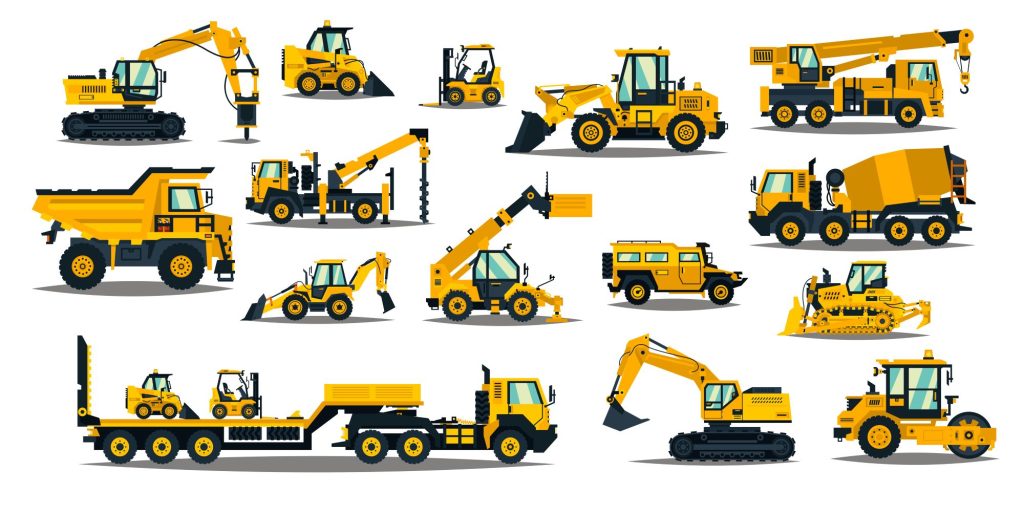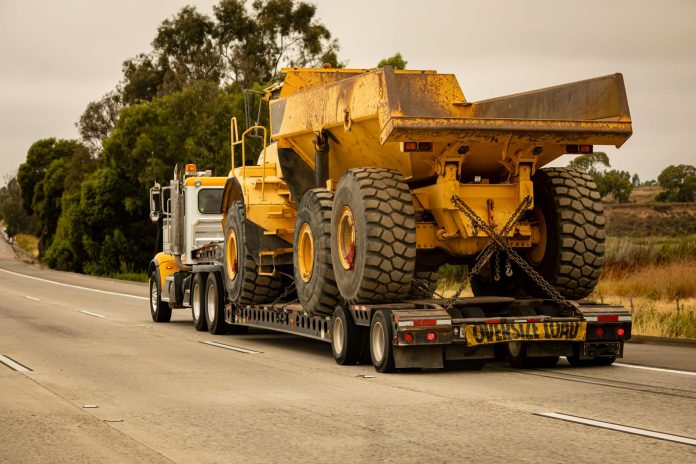Heavy equipment refers to heavy-duty vehicles often used in the construction industry for earthworks. Common ones include excavators, graders, and loaders.
Despite their different functions, one common factor with all heavy equipment is the large size and weight. These physical properties make it challenging to transport them for longer distances. Although challenging, it doesn’t mean it’s impossible.
Though transporting heavy equipment might seem daunting due to its size and weight, this challenge can be overcome with adequate preparation. So, what steps do you need to take?
Here’s what’s needed to prepare your heavy equipment for transport:
Look At The Manual
One of the best ways to know how to prepare your machinery for transport is from the manufacturer. Most heavy equipment manufacturers will guide on this through a manual.
Therefore, find your equipment manual; it should be one of the documents you got during your purchase. Some of the insight you might get is on the parts that shouldn’t be exposed during transport, like the exhaust pipe, or how to tie the equipment properly.
It’d help to seek guidance from your transport provider. Heavy haul companies can interpret and implement the manual to the letter, ensuring that all the stipulated guidelines for your equipment are properly adhered to.
Secure Your Equipment
Heavy equipment comprises several parts, some big and others small, with others tightly or loosely fixated. Transporting these large vehicles without properly securing them can lead to losses and hitches during transit.
Before transportation, ensure that all loose parts, like nuts and bolts, which can fall off during transport, are removed. This can either be done by you or your transport provider, depending on the agreement. Proceed to lock the door and keep the key secure. After all these, it’d help to wrap your heavy equipment with shrink wrap. The shrink wrap will hold all the parts in place during transportation; no part will misalign, which can interfere with the equipment’s performance.
Transportation companies like Titan Worldwide will have the necessary tools to secure your construction machinery.
Acquire The Necessary Permits
Transporting heavy equipment presents unique challenges due to the large size, weight, and complex structure of the equipment, making it a more demanding task than moving normal-sized goods. Heavy equipment is large and occupies a lot of space during transport, which can distract other road users or damage the roads.
Due to all these inconveniences, most governments have set regulations governing heavy equipment transportation. These regulations touch on the maximum weight, height, and length. You must get a permit to do the transportation, which comes at a fee.
Identify the permits you need for your journey as part of the preparation. If you’re transporting to another state, find out the regulations in the said state and comply accordingly.
Clean The Equipment
One of the things that people forget to do when transporting heavy equipment is cleaning them before transportation.
Cleaning your heavy equipment is part of maintenance, even as it allows you to see all its parts. You’ll pinpoint damaged parts and the ideal places to anchor the equipment during transport.
Also, did you know that mud can add to the weight of your heavy equipment? It’ll significantly impact transportation regarding the maximum load limits. Therefore, cleaning will help reduce your equipment’s overall weight.
Detach Any Removable Parts
The width and the length are essential aspects of heavy equipment transportation. You want to be within the limits or slightly beyond; it’ll reduce the amount you pay for permits.
You can reduce the length and width of your equipment by detaching any removable parts. Such parts are hooks, blades, scoops, and buckets. These tend to overhang or extend beyond the equipment’s body. Therefore, remove them and significantly reduce the length or width of your heavy equipment.
Inspect Your Equipment
Equipment inspection is an important step to take before embarking on your journey.
As previously stated, heavy equipment is made of various parts, both small and big. Some of these can get lost during transit without your knowledge. With this in mind, it’s important to inspect the equipment.
The inspection should detail all the parts of the heavy equipment and ensure it’s in good condition. It’d help to make a list of the parts. It’ll come in handy after transportation. You’ll be able to identify any damaged or missing parts and take the necessary action, depending on your agreement with the transportation provider.
It’s best to have someone with the know-how of heavy equipment carry out the inspection. They know all the parts heavy equipment should have and will be on the lookout to ensure they’re there during the inspection.
Ensure The Transportation Vehicle Is In Good Condition

As you prepare your business’s heavy equipment for transportation, you’ll likely forget to ensure the hauling vehicle is in good condition. If it isn’t, your heavy equipment might not reach its destination.
Therefore, check the condition of the transportation vehicle. Key aspects to check include:
- Engine
- Transmission and Gears
- Tires
- Brakes
- Lights
- Oil
Besides these, take the vehicle for a professional servicing to ensure that every part, even those not immediately visible, is in top-notch condition. Ensure they’re all working properly. As a precaution, ensure its insurance is up to date as well.
Conclusion
Factoring this should prepare your heavy equipment for its successful transportation. The discussion above has detailed how to do this. Therefore, implementing these tips is in your best interest. Your heavy equipment will arrive at its destination safe and sound.




































